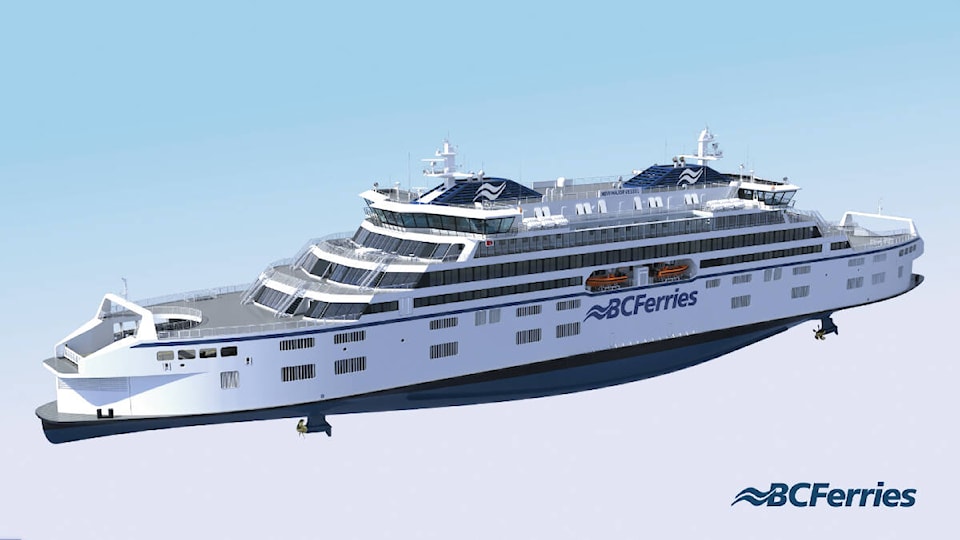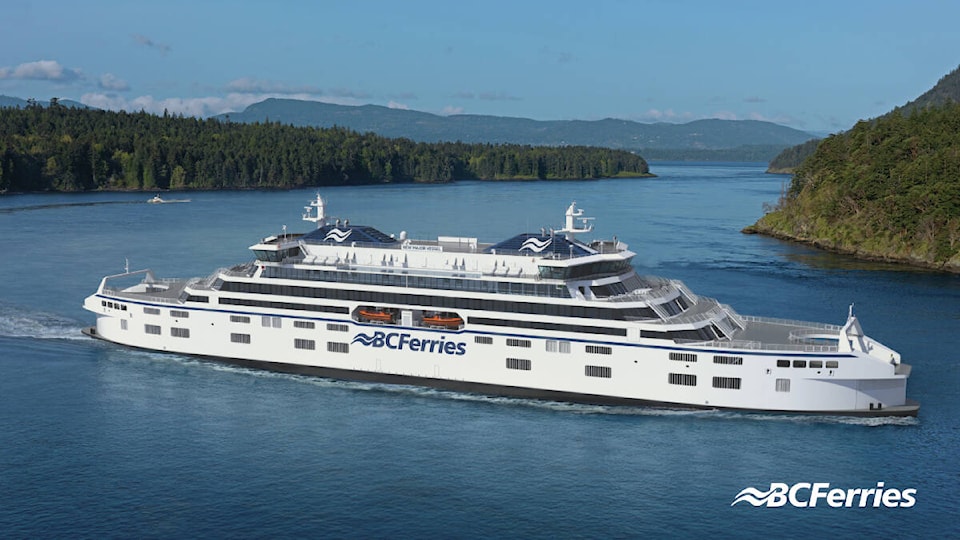Renderings show what BC Ferries hopes to put in place to replace ferries set to start retiring in 2029.
The corporation released two conceptual images on Monday (Feb. 26) and issued a request for supplier qualification that close March 22.
The RFSQ will pre-qualify shipyards for a subsequent request for proposal process to design, build and deliver up to seven vessels to replace older ferries set for retirement between 2029 and 2032. Qualified local, national and international shipyards can then take part in the request for proposal process expected this summer.
The vessels would replace up to six existing boats nearing their end-of-life and would serve the busiest routes between Vancouver Island and Metro Vancouver.
READ ALSO: Repeated cancellations blow BC Ferries into rough political waters
“The new major vessels program is the largest part of our capital plan to modernize and transform the ferry experience in British Columbia,” president and CEO Nicolas Jimenez said in a news release. “These vessels – greener, more efficient and standardized – represent the future of ferry travel in our province. They will significantly increase daily capacity, provide an enhanced customer experience, improve reliability and reduce environmental impacts.”
The vessels would carry up to 360 standard sized vehicles and 2,100 people, compared to a capacity of 250 to 310 vehicles and 1,200 to 1,500 people the retiring vessels can carry. The new boats would be standardized with others in the fleet to allow flexibility moving them between routes when maintenance or refits are required.
The basic design for these vessels is being developed in collaboration with a leading naval architect firm, LMG Marin AS, in order to maximize efficiency and reduce greenhouse gas emissions. The design calls for engines capable of using bio- and renewable fuels, and includes a battery-hybrid propulsion system that will allow for conversion to full battery-electric operation once shore-based recharging infrastructure becomes available.
READ ALSO: Improvements at BC Ferries a ‘top priority’ of government

